Insects make up the largest and most diverse group of animals on our planet, with millions of species exhibiting fascinating behaviors. While many people may cringe at the thought of insects as pets, certain social species can make fascinating companions when kept in appropriate colonies. These insects naturally live in complex communities with division of labor, communication systems, and collective problem-solving abilities that rival those of much larger animals. Their social structures make them easier to care for in captivity and provide learning opportunities as you observe their intricate interactions. From building elaborate homes to caring for their young collectively, social insects offer a glimpse into nature’s most successful evolutionary strategy—cooperation.
Ant Colonies: Nature’s Tiny Civilizations
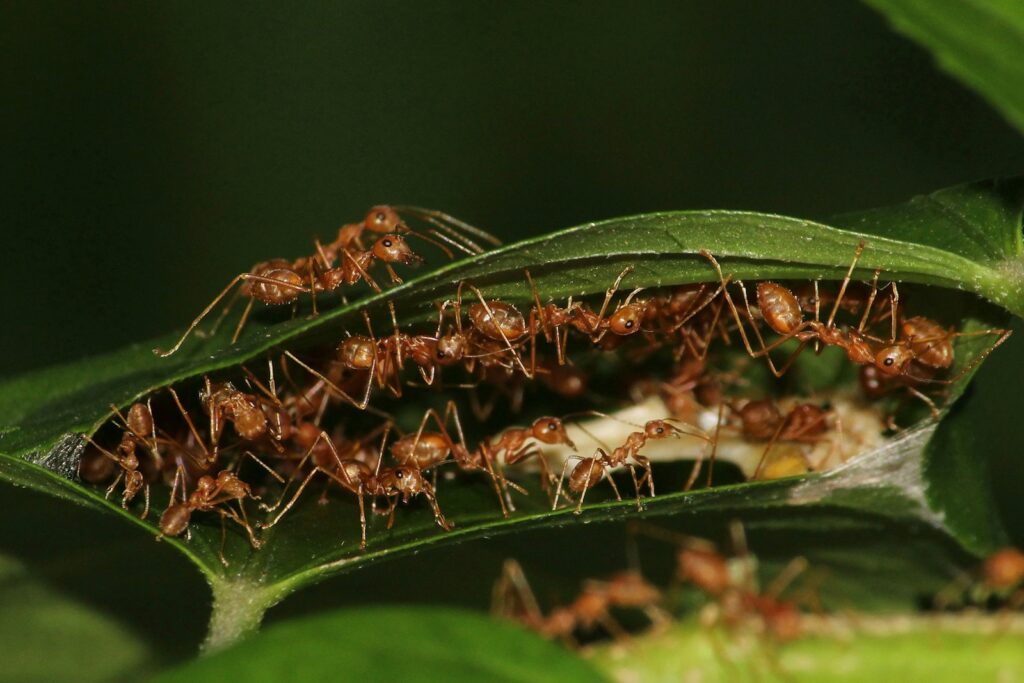
Ants represent one of the most successful examples of social insects on the planet, with highly organized colonies housing thousands to millions of individuals. Each ant colony operates as a superorganism, where individuals play specific roles, including workers, soldiers, and reproductive queens. Pet ant farms, often housed in transparent containers filled with soil or gel, allow enthusiasts to witness the tunnel systems and chambers ants create underground. Common pet species include Harvester ants and Carpenter ants, which can live for several years when properly cared for with appropriate food, moisture, and temperature. The fascination of keeping ants comes from watching their coordinated behaviors, from food gathering to caring for developing larvae.
Honeybees: Sweet Social Structure
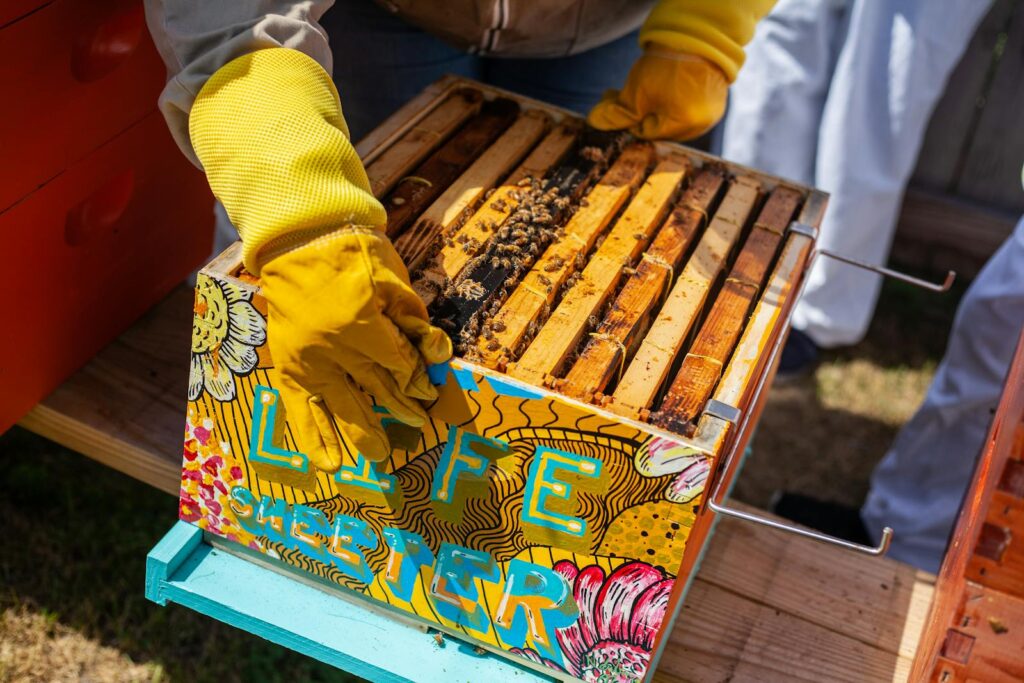
Honeybees maintain one of the most complex social systems in the insect world, centered around a single queen who lays all the eggs for the colony. While typically kept in outdoor hives for honey production, observation hives have become increasingly popular for educational purposes and for hobby beekeepers with limited space. These specialized, clear-sided enclosures allow viewing of the bees’ activities while they maintain access to the outdoors for foraging. Within the hive, workers progress through different roles as they age, serving as nurses, builders, guards, and foragers in a remarkable example of age-based division of labor. Beginners should note that beekeeping requires proper education, equipment, and, in many areas, permits or registration with local agricultural authorities.
Darkling Beetles and Their Larvae
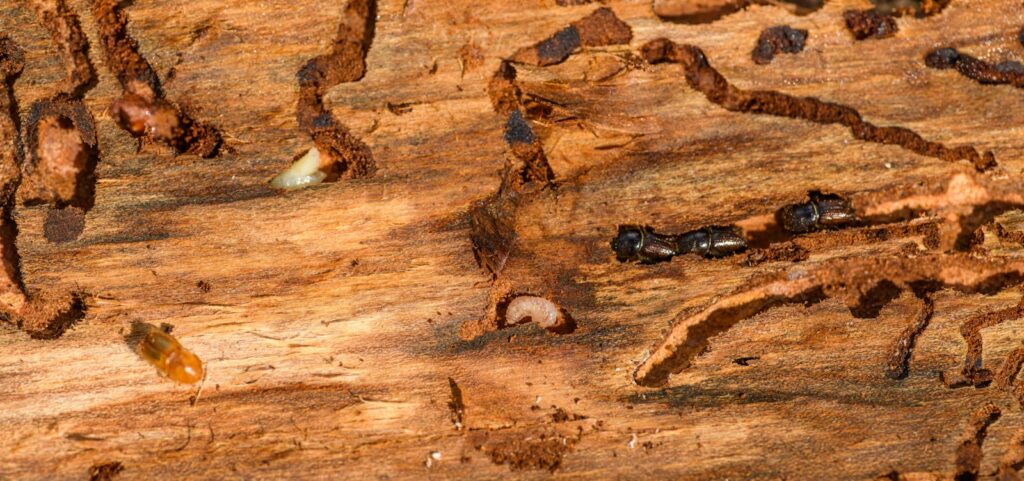
Darkling beetles and their larvae (commonly known as mealworms or superworms) represent one of the most accessible social insects for beginning enthusiasts. These insects naturally aggregate in groups and can be kept in simple containers with bran or oatmeal substrate, forming fascinating mini-communities. Observing the life cycle from larvae to pupae to adult beetles provides an educational opportunity, particularly for children curious about metamorphosis and insect development. Their social behavior is less complex than that of ants or bees, but still includes interesting aggregation behaviors and chemical communication between them. Darkling beetles are particularly appealing as pet insects because they’re clean, quiet, relatively odor-free, and require minimal specialized care beyond food, occasional moisture, and cleaning.
Madagascar Hissing Cockroaches
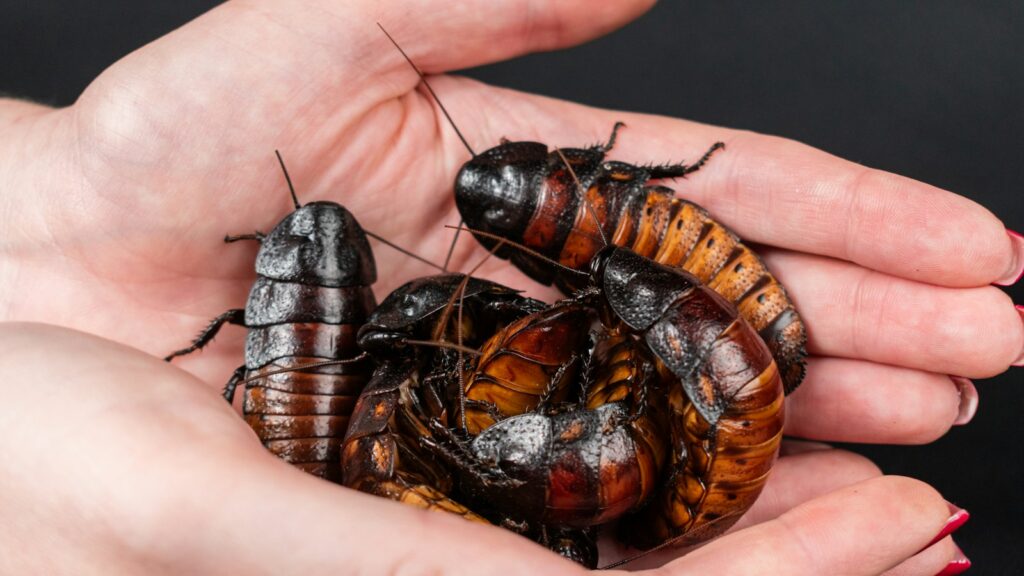
Despite the negative associations many people have with cockroaches, Madagascar hissing cockroaches have gained popularity as pet insects due to their social nature and impressive size. These insects live in groups in rotting logs and can thrive in captivity when housed in appropriate terrariums with hiding places and climbing structures. Their name comes from the hissing sound they produce by forcing air through modified breathing tubes, used for communication and during courtship rituals. The social hierarchy within a group includes dominant males who defend territory and compete for breeding rights, creating behavioral displays for owners to observe. Unlike common household cockroach pests, these species don’t infest homes and are clean, making them suitable classroom pets or first insects for beginners.
Paper Wasps: Architects of the Insect World

Paper wasps live in smaller colonies than many social insects but display remarkable cooperative behavior in constructing their distinctive papery nests. For the adventurous insect keeper, observation nests allow viewing of the entire colony life cycle, from the queen starting a new nest in spring to workers raising new generations. Unlike yellowjackets and hornets that can be aggressive, certain paper wasp species are relatively docile when their nest isn’t threatened, making them potential subjects for careful observation. Their social structure includes a dominant reproductive female and several subordinate females who help with nest construction and brood care. Keeping wasps requires specialized knowledge and extreme caution, as they can still deliver painful stings if they feel threatened.
Termite Colonies: Underappreciated Decomposers
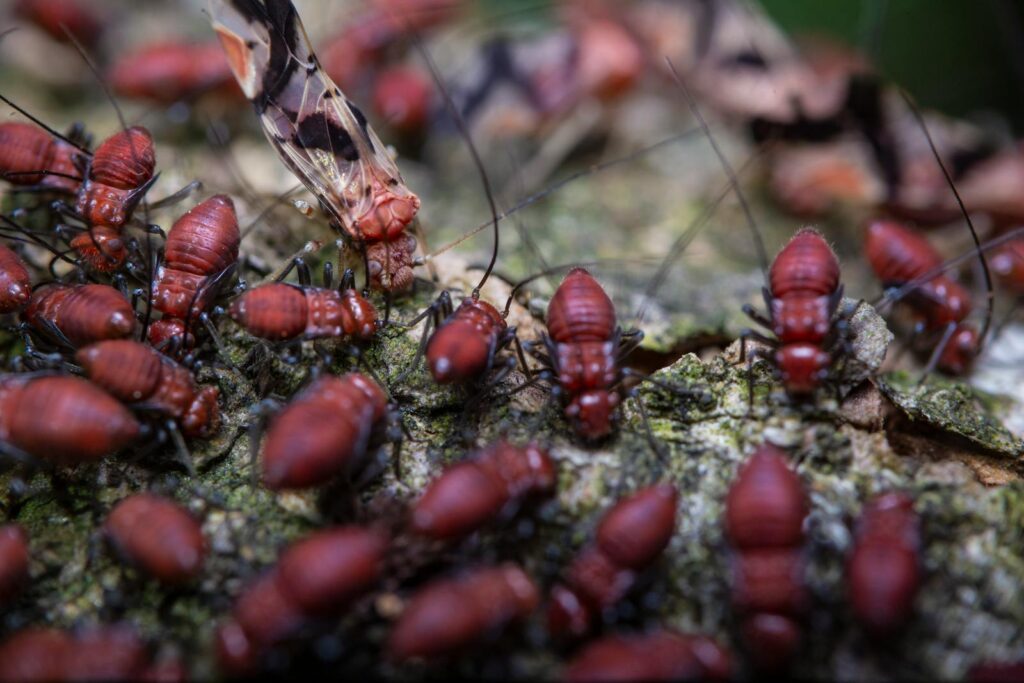
Termites represent some of the most highly evolved social insects on Earth, with elaborate caste systems including workers, soldiers, and reproductive individuals. While most people consider them destructive pests, certain species can be kept in contained laboratory colonies for scientific observation and educational purposes. These remarkable insects can digest cellulose, the main component of plant cell walls, thanks to specialized microorganisms in their digestive systems, allowing them to consume wood and other plant materials that most animals cannot process. Their building activities are particularly impressive, with some species constructing elaborate mounds featuring sophisticated ventilation systems that maintain optimal temperature and humidity. For those interested in termites as pets, specialized contained observation setups are essential to prevent escape and potential property damage.
Leafcutter Ants: Fungus Farmers

Leafcutter ants represent one of the most fascinating examples of advanced insect societies, cultivating fungus gardens as their primary food source. These remarkable insects cut and process leaves not to eat directly but to feed the fungus they grow in underground chambers. Specialized formicaria (ant farms) designed for leafcutters must provide space for both the ant colony and their fungus gardens, along with the particular environmental conditions both require to thrive. The division of labor within leafcutter colonies is extraordinarily complex, with ants of different sizes performing specialized tasks from leaf cutting to garden tending to colony defense. While challenging to keep, successful leafcutter colonies reward their keepers with a glimpse into one of nature’s oldest agricultural societies, dating back at least 50 million years.
Bumblebees: Gentle Social Pollinators
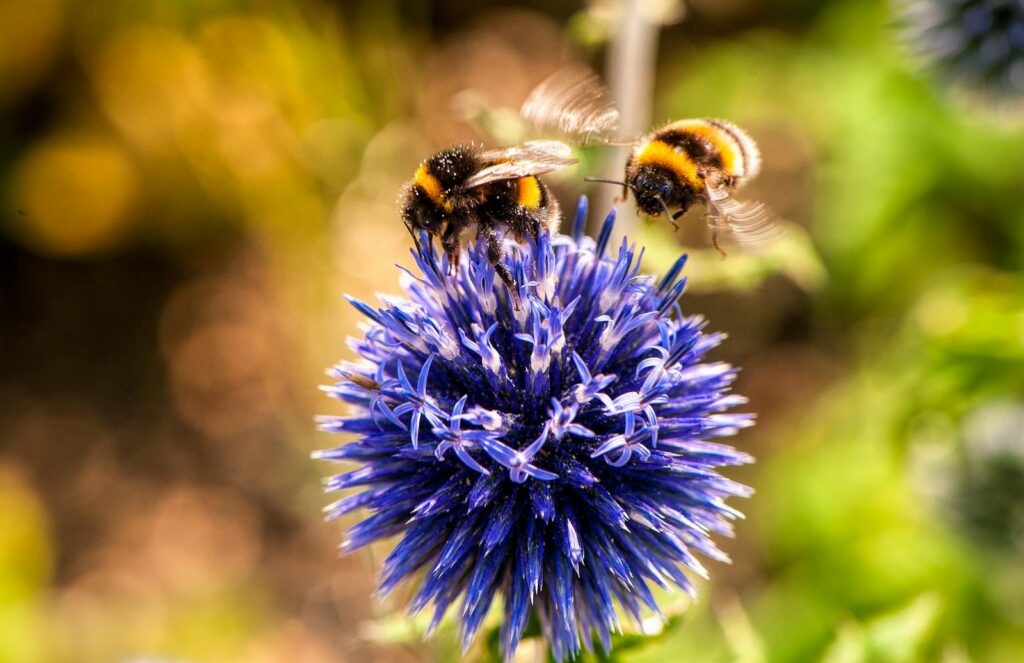
Bumblebees form smaller, annual colonies with a more relaxed social structure compared to their honeybee relatives, making them fascinating subjects for observation. Their colonies typically number between 50-400 individuals, with a queen who initiates the colony each spring after emerging from hibernation. Observation nests designed specifically for bumblebees allow enthusiasts to watch as workers construct wax pots for storing honey and housing developing larvae. Unlike honeybees, bumblebees don’t produce significant honey stores but are crucial pollinators for many plants, including those that honeybees cannot effectively pollinate. Their “buzz pollination” technique—vibrating flowers to release pollen, makes them particularly valuable for certain crops like tomatoes and blueberries.
Millipedes: Gentle Detritivores

While not insects, but arthropods, millipedes are often grouped with pet insects and display fascinating social aggregation behaviors that make them suitable for group housing. These gentle decomposers naturally gather in groups, especially during breeding season or when environmental conditions become challenging. Certain species, like the Giant African Millipede, can grow to impressive sizes and live for 5-7 years, making them long-term companions that require minimal care beyond appropriate substrate, humidity, and vegetable food. Their social interactions are less complex than true social insects, primarily involving chemical communication and aggregation rather than division of labor. Millipedes make excellent display animals in naturalistic terrariums, where multiple individuals can be observed interacting with their environment and each other.
Dung Beetles: Recycling Specialists
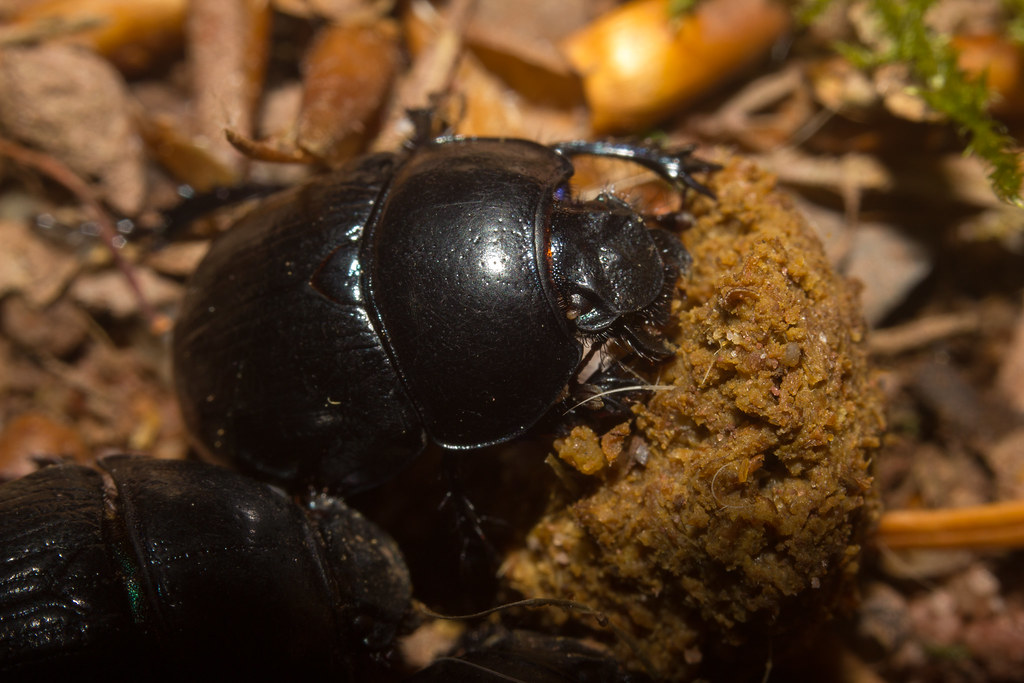
Some species of dung beetles display remarkable social behaviors centered around the collection and processing of animal dung, which they use for food and breeding chambers. Pairs of beetles often work together to form dung balls and bury them in underground tunnels, where females lay eggs that develop into larvae that feed on the dung. In captivity, these beetles can be kept in specially designed terrariums with appropriate substrate and artificial dung substitutes made from decaying plant matter. Their behavior provides fascinating insights into natural recycling processes and resource competition, as beetles may attempt to steal balls from other pairs. While not as commonly kept as some other insects, their unique behaviors make them valuable subjects for educational displays and environmental education.
Creating Proper Housing for Social Insects
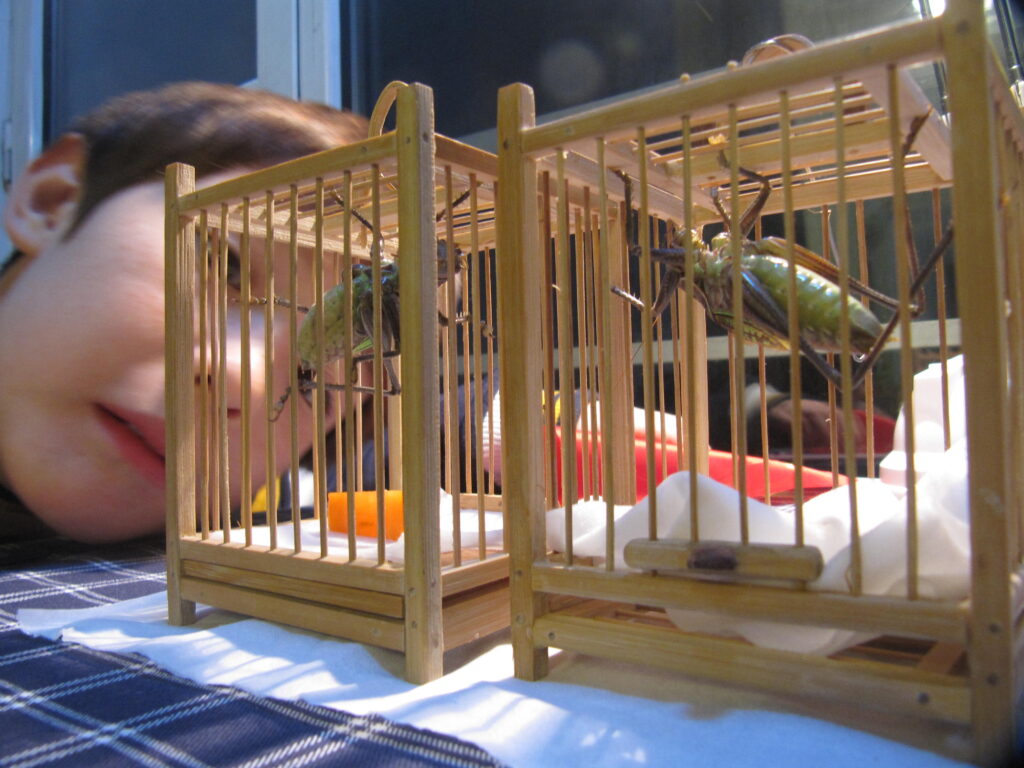
Successfully keeping social insects requires understanding their specific environmental needs and creating housing that mimics their natural habitat. Each species has particular requirements for space, substrate, humidity, temperature, and ventilation that must be met for the colony to thrive. For observable colonies, many enthusiasts choose setups with clear sides made from glass or acrylic that allow viewing while maintaining proper conditions inside. Escape prevention is crucial, particularly for potentially invasive species, requiring secure lids, proper sealing, and in some cases, additional barriers such as petroleum jelly around openings. Most social insects benefit from naturalistic setups that include appropriate hiding places, climbing structures, and areas for colony expansion as the population grows. Regular maintenance, including cleaning, substrate replacement, and monitoring for parasites or disease, is essential for long-term colony health.
Legal and Ethical Considerations

Before acquiring any social insect as a pet, researching local regulations is essential, as many jurisdictions restrict certain species due to agricultural or ecological concerns. Honeybees, for example, are regulated in most areas to prevent disease spread between colonies, while some ant species are prohibited from interstate transport in the United States to prevent potential invasions. Ethical sourcing is equally important, with enthusiasts encouraged to purchase captive-bred specimens rather than wild-caught individuals that might impact natural populations. Responsible ownership also means having a plan for the colony’s entire lifespan, including proper disposal if the colony must be eliminated (never releasing non-native species into the environment). Educational benefits should be emphasized, using these fascinating creatures to teach about ecology, behavior, and the importance of even the smallest organisms in our ecosystem.
Conclusion

Keeping social insects offers a window into complex natural systems that have evolved over millions of years. These fascinating creatures demonstrate principles of cooperation, specialization, and communication that continue to inspire scientists and hobbyists alike. Whether you’re drawn to the industrial efficiency of an ant colony, the architectural marvels of paper wasps, or the agricultural innovations of leafcutter ants, social insects provide endless opportunities for learning and appreciation. As with any pet, successful keeping requires research, preparation, and commitment. However, the rewards of observing these tiny societies at work make the effort worthwhile. By bringing these miniature communities into our homes and classrooms, we gain not just pets but living laboratories that demonstrate some of nature’s most successful evolutionary strategies.

